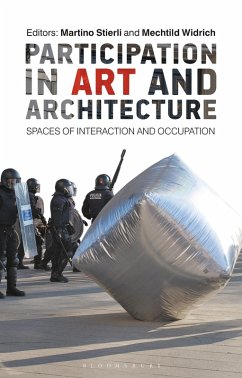Does 'participatory' art and architecture shape social reality, or is it shaped by it?
Shifting the ground of this debate, which tends to assume one or other direction of influence, this innovative book explores the inherently dialectic relationship between society and the built environment. At the same time, it strives for a historically conscious discussion of a very contemporary issue. Chapters rethink the top-down model of participation and audience activation of high modernism, from Alexander Dorner's immersive museum to Mies van der Rohe's 'room(s) for play'; investigate participation in spaces under political pressure, from exhibitions in bombed-out buildings in besieged Sarajevo (1992-5) to the art and organizing of revolution in Egypt (2012-13); draw historical parallels between modes of participation and the exercise of power that are seldom compared with one another, from sites of occupation in 1968 Mexico and 2011 Spain; finally creating links between cartography and feminism and between tourism and internet surveillance.
With these juxtapositions of the aesthetic and the everyday, and the built and the mediated, new questions arise: is space formed once and for all, or is it the changeable product of changeable patterns of use? Does the aesthetic always correspond to the political, or might an aesthetically authoritarian space be conducive to social justice? In exploring these questions, this book looks at how participants themselves exert power, rather than being victimised or liberated from it.
Shifting the ground of this debate, which tends to assume one or other direction of influence, this innovative book explores the inherently dialectic relationship between society and the built environment. At the same time, it strives for a historically conscious discussion of a very contemporary issue. Chapters rethink the top-down model of participation and audience activation of high modernism, from Alexander Dorner's immersive museum to Mies van der Rohe's 'room(s) for play'; investigate participation in spaces under political pressure, from exhibitions in bombed-out buildings in besieged Sarajevo (1992-5) to the art and organizing of revolution in Egypt (2012-13); draw historical parallels between modes of participation and the exercise of power that are seldom compared with one another, from sites of occupation in 1968 Mexico and 2011 Spain; finally creating links between cartography and feminism and between tourism and internet surveillance.
With these juxtapositions of the aesthetic and the everyday, and the built and the mediated, new questions arise: is space formed once and for all, or is it the changeable product of changeable patterns of use? Does the aesthetic always correspond to the political, or might an aesthetically authoritarian space be conducive to social justice? In exploring these questions, this book looks at how participants themselves exert power, rather than being victimised or liberated from it.









